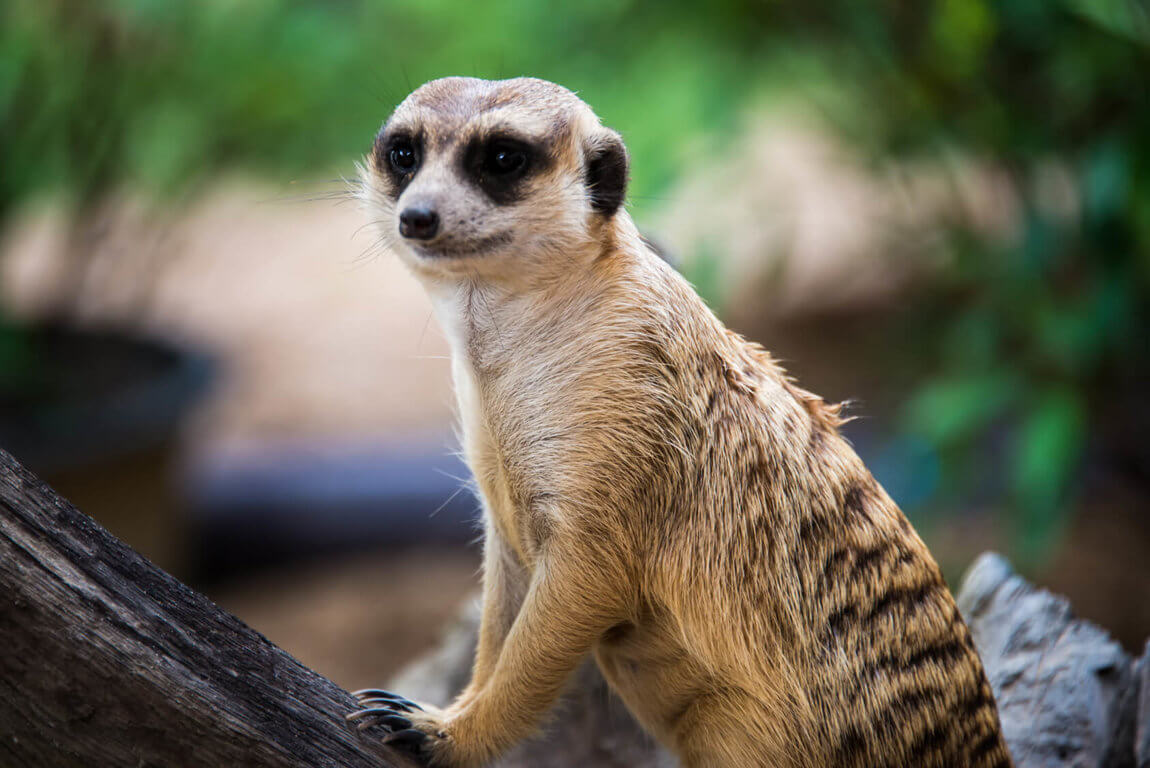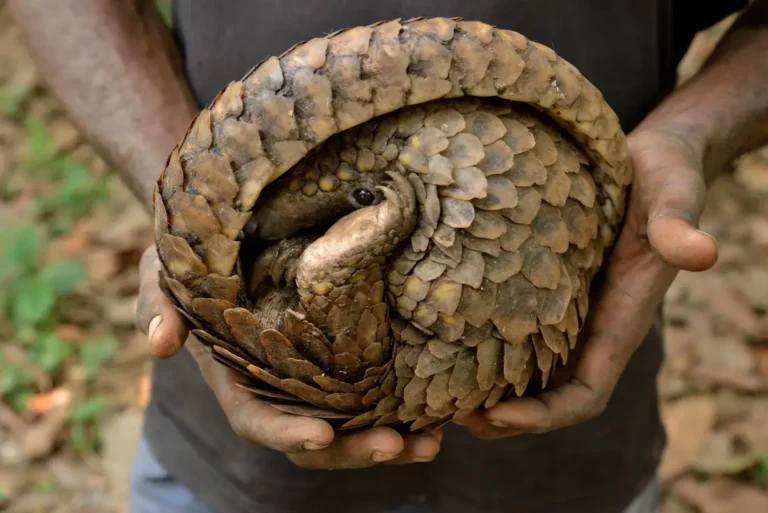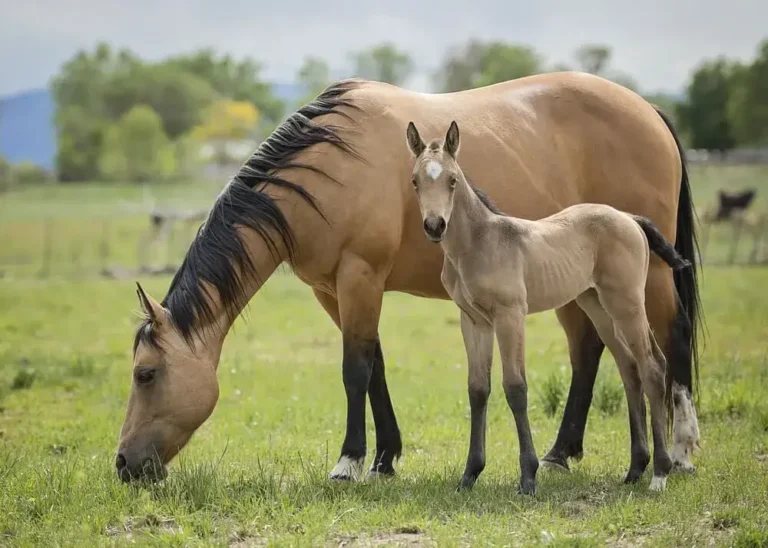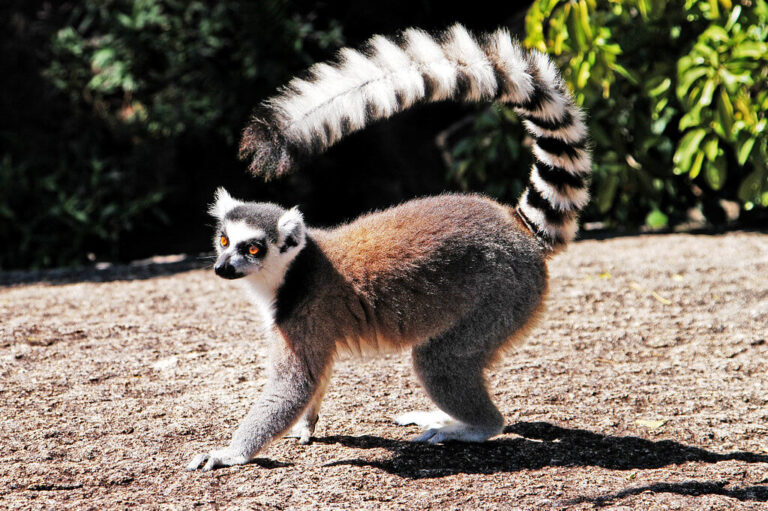Meerkat: An In-Depth Look into the Life of a Fascinating Creature
The meerkat (Suricata suricatta) is a small, social mammal known for its vigilant posture and complex behaviors. Native to southern Africa, this remarkable animal thrives in harsh desert environments. This article will explore the scientific classification, physical characteristics, habitat, behavior, diet, reproduction, predators, conservation status, evolutionary history, and its unique relationship with humans.
Contents
Scientific Classification
- Kingdom: Animalia
- Phylum: Chordata
- Class: Mammalia
- Order: Carnivora
- Family: Herpestidae
- Genus: Suricata
- Species: Suricata suricatta
The meerkat belongs to the mongoose family, Herpestidae. It is the only species within the Suricata genus known for its small size and highly social nature.
Physical Characteristics

Meerkats are small mammals, typically weighing around 0.62 to 0.97 kg (1.4 to 2.1 lbs) and measuring about 24 to 30 cm (9.4 to 11.8 inches) in length, excluding the tail, which can add 19 to 24 cm (7.5 to 9.4 inches).
Key physical traits include:
- Fur: Light brown with distinct dark bands on the back and a paler underside.
- Face: A pointed snout and dark patches around the eyes.
- Tail: Long and slender, used for balance when standing upright.
- Limbs: Sharp, curved claws on their forelimbs, perfect for digging.
These physical adaptations are crucial for their survival in arid regions, enabling them to dig burrows, locate food, and maintain vigilance for predators.
Habitat
Meerkats inhabit the arid regions of southern Africa, including the Kalahari Desert, the Namib Desert, and parts of Angola and South Africa. Their natural habitat is characterized by sparse vegetation, sandy soils, and extreme temperatures, both hot during the day and cold at night.
They live in underground burrows, which they dig with their powerful forelimbs. These caves have multiple entrances and chambers, offering shelter from extreme temperatures and predators.
Behavior

Meerkats are known for their social structure and cooperative behaviors. They live in groups called “mobs” or “clans,” usually consisting of 20 to 30 individuals, although larger groups have been observed.
Key social behaviors include:
- Cooperative Foraging: Members work together to find food, with one or two individuals standing guard while others forage.
- Sentinel Duty: One meerkat takes a position as a sentinel, standing upright and watching for predators while the rest of the group feeds or plays.
- Grooming: Meerkats groom each other regularly, strengthening social bonds and maintaining hygiene.
Their complex social structure is a hallmark of their survival strategy, where cooperation is vital for protection and resource sharing.
Diet
Meerkats are primarily insectivores, but they have an omnivorous diet that includes:
- Insects: Beetles, spiders, and caterpillars are their primary food source.
- Small Vertebrates: Occasionally, they catch small lizards, rodents, or birds.
- Plants sometimes eat roots, tubers, or fruits when insects are scarce.
- Scorpions: Meerkats have an exceptional resistance to scorpion venom, making them one of the few animals to hunt and eat these dangerous creatures.
Their ability to eat a wide variety of foods allows them to survive in a challenging desert environment with limited food sources.
Reproduction
Meerkat reproduction is typically limited to a dominant breeding pair in a group, though other adults in the group assist in raising the young.
- Gestation Period: Approximately 11 weeks.
- Litter Size: Ranges from 1 to 5 pups, though 3 to 4 is most common.
- Pup Development: Born blind and hairless, pups remain in the burrow for the first few weeks, relying on the care of their parents and “babysitters” from the group.
The pups start foraging with the group at about 3 weeks old. Cooperative care by non-breeding individuals ensures higher survival rates for the young.
Predators
Despite their vigilance, meerkats face numerous predators:
- Birds of Prey: Eagles and hawks are the primary threat from the sky.
- Mammals: Jackals and other carnivores may hunt meerkats.
- Snakes: Certain species, like the Cape cobra, are known to invade caves and prey on pups.
Meerkats rely on their sentinel system to detect predators early. The sentry will give specific vocal warnings, alerting the group to seek cover or take defensive action.
Conservation Status
According to the IUCN Red List, meerkats are listed as Least Concern. Their population is stable due to their adaptability to harsh environments and their social behaviors that aid in survival.
However, habitat destruction, human expansion, and climate change could pose threats in the future, particularly in altering their food sources and habitat availability.
Evolutionary History
Meerkats evolved as part of the mongoose family, with ancestors likely adapting to desert environments millions of years ago. Their unique social structure, cooperative breeding, and specialized diet result from evolutionary pressures favouring group living and versatile feeding habits.
Fossil evidence suggests that meerkats developed distinct features to survive in Africa’s harsh, open environments, evolving sharp claws for digging and heightened vigilance to avoid predators.
Relationship with Humans
Meerkats have gained popularity among humans due to their charismatic behavior and appearance. They are featured in wildlife documentaries, and some zoos have meerkat exhibits where their social dynamics are studied and appreciated.
However, interactions with humans in the wild are minimal, as meerkats typically avoid human settlements. Their portrayal in media, especially in shows like Meerkat Manor, has boosted their public profile. Still, it’s essential to recognize them as wild animals that thrive best in their natural habitats.
Interesting Facts
- Incredible Immunity: Meerkats are immune to many types of venom, including that of scorpions, which allows them to eat these dangerous creatures without harm.
- Communication: Meerkats have a rich vocal repertoire, using different calls to warn the group about different predators.
- Standing Guard: While the image of a meerkat standing upright is iconic, they do so primarily to scan for predators, using their tails for balance.
- Cooperative Breeding: Non-breeding adults assist in raising the young, a behavior called alloparenting.
- Burrow Architects: Meerkat burrows are complex, with many chambers and exits that protect them from elements and predators.
Conclusion
The meerkat is a fascinating species known for its social behavior, adaptability, and unique evolutionary traits. Their ability to thrive in harsh environments and tight-knit social structures make them a remarkable example of animal cooperation. As long as their habitats are preserved, meerkats will continue to captivate the world with their intelligence, agility, and charm.
- Golden Retriever Pros and Cons: What Every Pet Parent Should Know - 15 September 2025
- Cane Corso Dog Breed: Health, Care, and Lifespan - 14 September 2025
- Catahoula Leopard Dogs: Description, Temperament, Lifespan, & Facts - 21 July 2025







